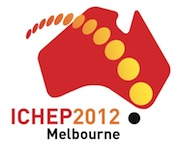Speaker
Dr
Steven Robertson
(McGill University (CA))
Description
Lepton-flavor violation in the standard model occurs only via neutrino mixing, and is thus suppressed by powers of (m_nu / m_W)^2 to far below observable levels. However, in many extensions of the standard model, lepton-flavor violation involving third-generation fermions may be highly enhanced. Study of B decays involving a tau lepton in the final state is complicated by the presence of final-state neutrinos. At an e+e- B factory, this difficulty is handled by reconstructing both B mesons in the event, taking advantage of the high luminosity and clean event environment. Using this technique, we set the first upper limits on the branching fractions of B-->K tau e, B-->pi tau e, and B-->pi tau mu, and improve our previous limit on B-->K tau mu, at the level of a few times 10^-5.
The decay of a B0 meson into two neutrinos is suppressed by a helicity factor of order (m_nu / m_B)^2 in the standard model. The same decay with an additional photon in the final state is also predicted to be unobservably rare, with a branching fraction at the level of 10^-9. Thus, observation of such decays would constitute evidence for new physics, and several scenarios beyond the standard model predict branching fractions as high as 10^-6. The search for invisible (+ photon) decays of the B0 requires fully reconstructing the entire event and tagging the presence of the B0, and so can be performed only at an e+e- B factory. We present the results of a new analysis based on the full BABAR dataset and improved reconstruction, obtaining limits several times tighter than the previous results, at the level of 10^-5.
The decays B-->K(*)nu nubar are flavor-changing neutral-current (FCNC) processes that proceed via a box or penguin diagram. FCNC decays are suppressed in the standard model, with branching-fraction predictions in the 10^-6 range, but they may be enhanced by new-physics contributions. Due to the final-state neutrinos and the small decay rate, study of these decays can currently be performed only at an e+e- B factory, where reconstruction of the other B in the event (the “tag B”) is possible. We report the results of a new search for these decays using hadronic decays to identify the tag B in the full BABAR data set. We also use our data to search for invisible decays of the J/psi.
Lepton number is conserved in the standard model, but may occur in scenarios beyond the standard model, for example, due to the existence of Majorana neutrinos. We report the results of a new search for lepton-number violation in the decays B+ -->K-e+e+, B+ -->pi-e+e+, B+ -->K-mu+mu+, B+ -->pi-mu+mu+, and set upper limits on the branching fractions at a few times 10^-8. Study of the di-electron modes has been performed only in e+e- B factories, and in these modes we improve on previous limits by two orders of magnitude.
Author
Dr
Steven Robertson
(McGill University (CA))
